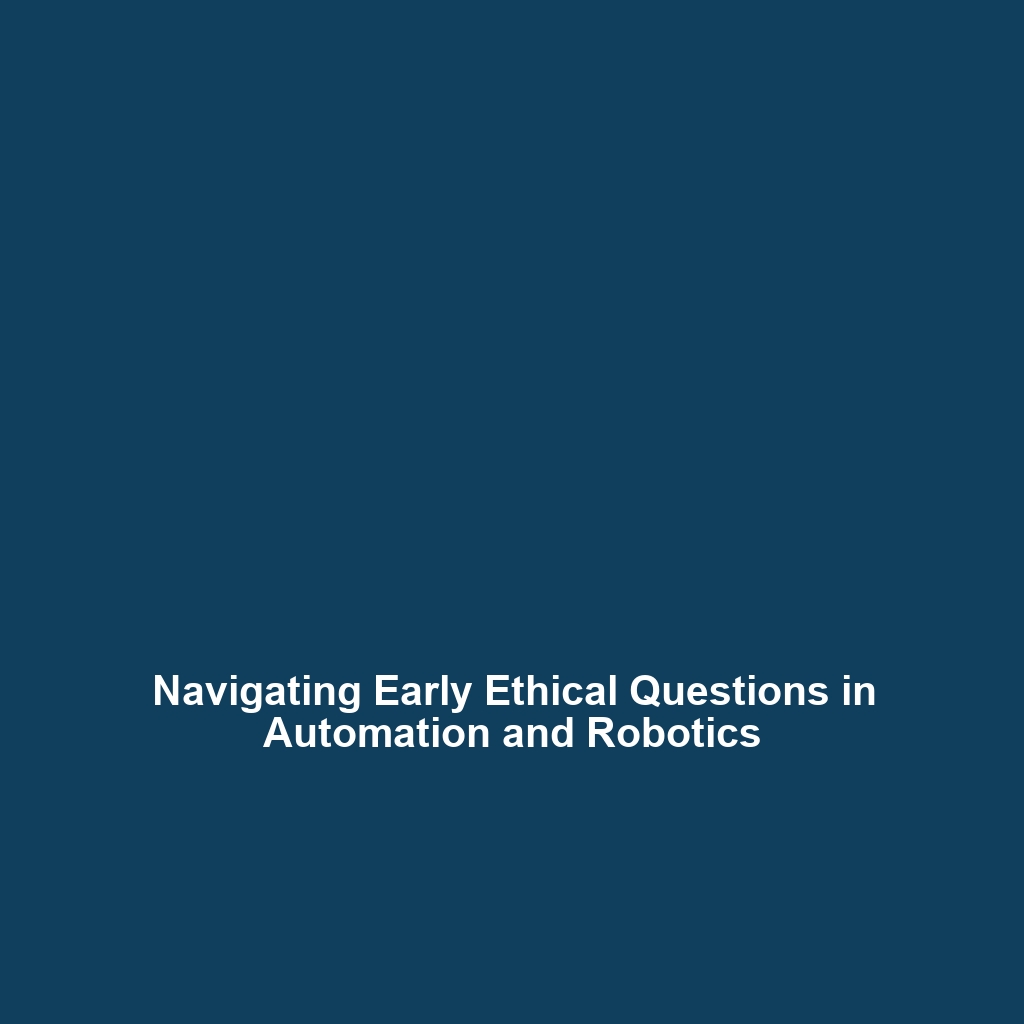Case Studies of Humanoid Robots in Service Industries
Humanoid robots have emerged as transformative agents in various service industries, including airports, hotels, and shopping malls. The deployment of these robots is not just a technological marvel but also a critical response to evolving consumer demands and operational efficiencies. This article examines key case studies of humanoid robots used in service industries, highlighting their significance in the broader context of robotics and automation.
Key Concepts
Humanoid robots are designed to perform tasks that resemble human actions, making them uniquely suited for service-oriented roles. Here are some major concepts associated with their use:
Human-Robot Interaction
Effective communication between humans and humanoid robots is essential for successful integration into service environments. This interaction is facilitated through advanced AI and natural language processing technologies.
Task Automation
Humanoid robots are capable of automating various repetitive and mundane tasks, thereby enhancing efficiency and allowing human workers to focus on more complex responsibilities.
Applications and Real-World Uses
Humanoid robots are being deployed across several service industries. The following examples illustrate how these robots are utilized:
- Airports: Robots such as Skybot guide passengers to their gates and assist with check-in processes, improving flow and reducing wait times.
- Hotels: In brands like Henn-na Hotel in Japan, robots perform check-in procedures, carry luggage, and provide information, enhancing guest experiences.
- Shopping Malls: Robots like Nao greet customers, provide directions, and offer product information, streamlining the shopping experience.
Current Challenges
Despite the benefits, there are several challenges in implementing humanoid robots in service industries:
- Integration with Existing Systems: Difficulty in merging humanoid robots with traditional service protocols can lead to inefficiencies.
- Public Acceptance: Reluctance from customers to interact with robots remains a significant barrier to widespread adoption.
- Technical Limitations: Complex tasks and the need for nuanced social interactions can overwhelm current robot capabilities.
Future Research and Innovations
The future of humanoid robots in service industries looks promising, with ongoing research aiming to enhance functionality and user experience:
- Advanced AI Capabilities: Innovations in machine learning will enable robots to better understand and predict human behavior.
- Improved Mobility and Dexterity: Next-gen robots will possess enhanced physical capabilities, allowing them to navigate complex environments more efficiently.
- Personalization: Future humanoid robots are expected to offer personalized services, adapting to individual customer preferences over time.
Conclusion
Case studies of humanoid robots in service industries, particularly in airports, hotels, and shopping malls, illustrate their growing importance in enhancing service delivery. As these technologies continue to evolve, they pave the way for innovative applications and improved consumer experiences. For further insights into related topics, explore our articles on robotics advancements and automation in service industries. Stay informed about the remarkable developments shaping the future of humanoid robots!






